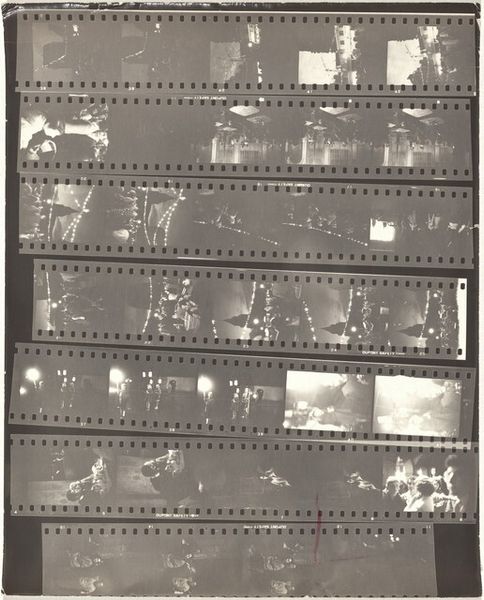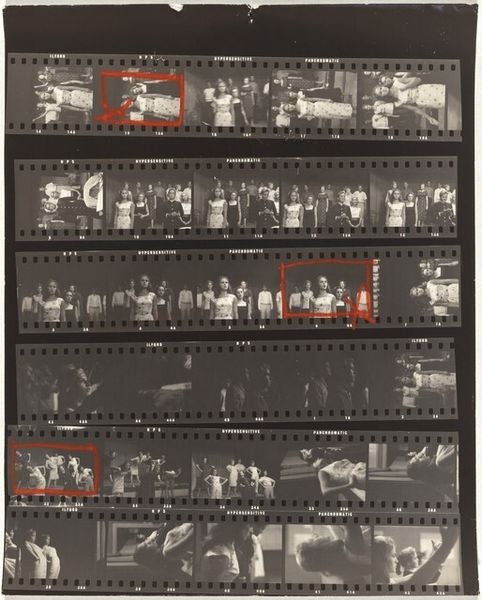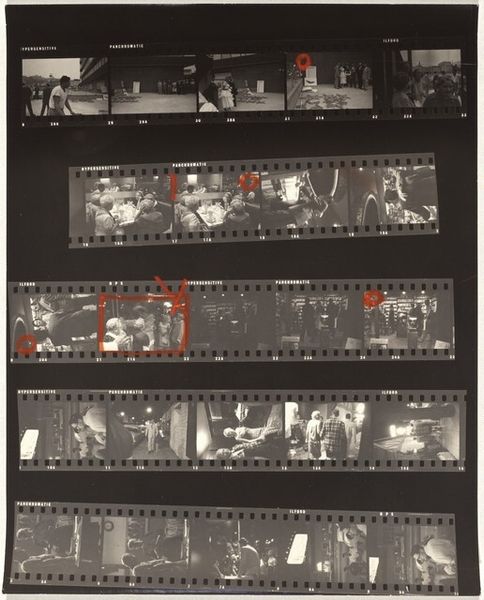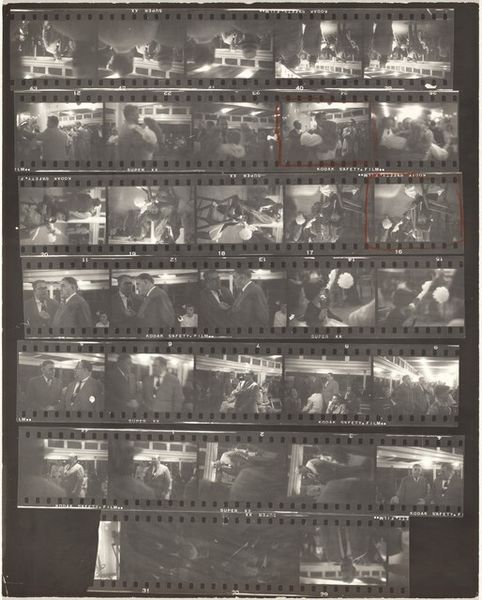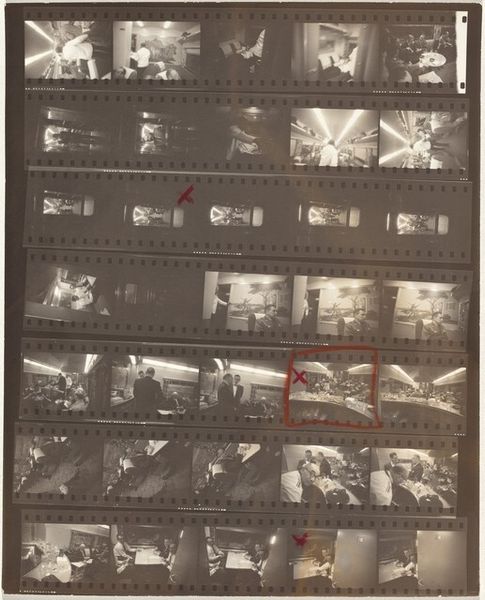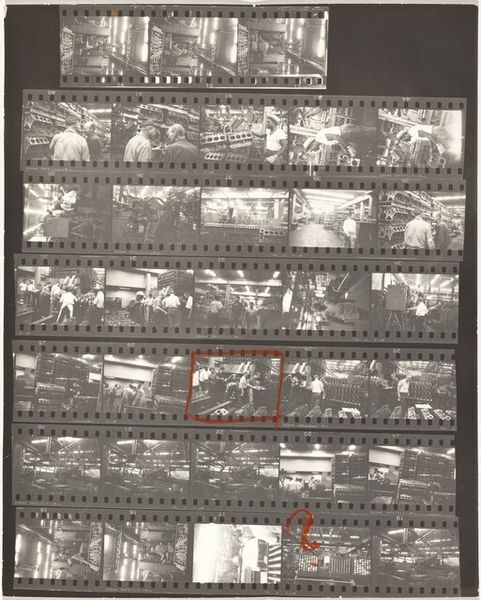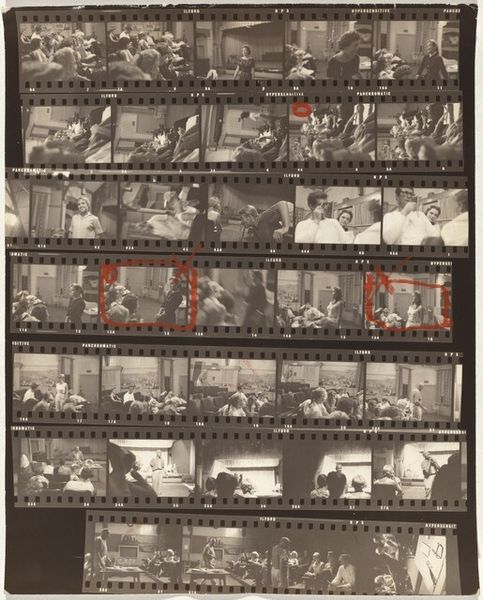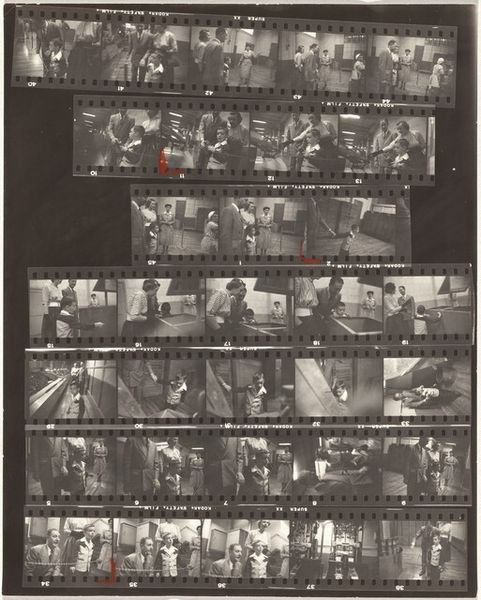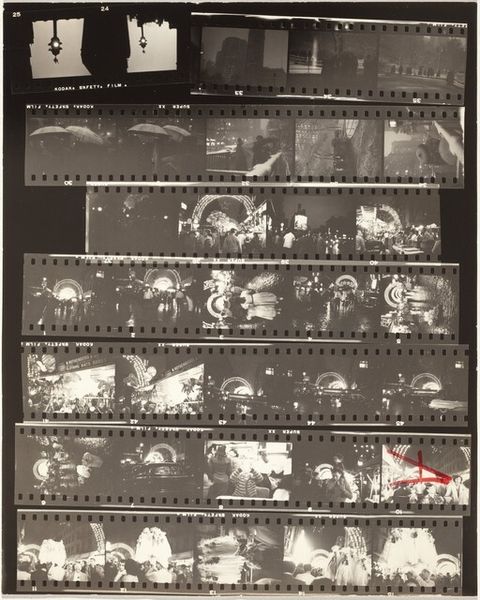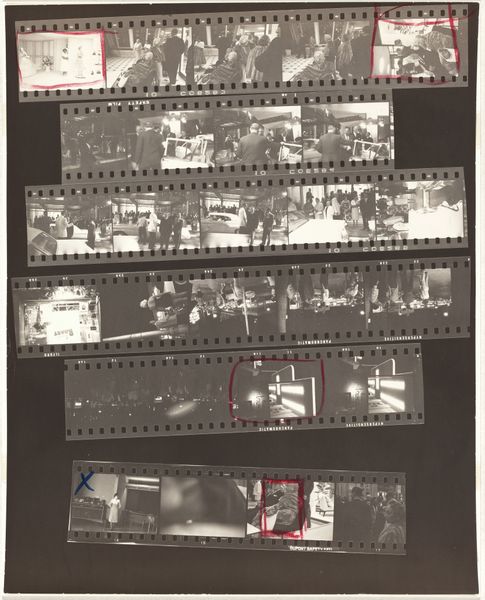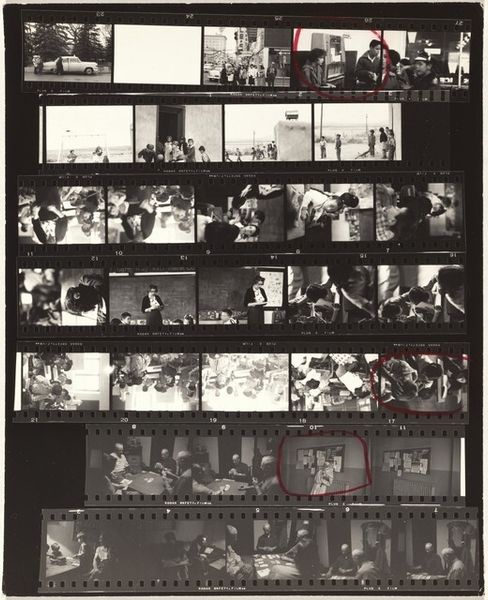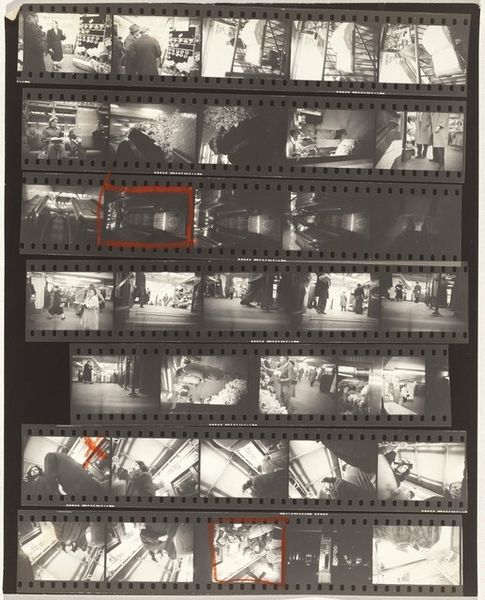
print, photography
film photography
photography
film
modernism
Dimensions: sheet: 20.2 x 25.3 cm (7 15/16 x 9 15/16 in.)
Copyright: National Gallery of Art: CC0 1.0
Editor: We're looking at Robert Frank's "Concert Story for 'New York Times' 1" from 1965. It's a photographic print, featuring multiple strips of film negatives on a single sheet. The dark, grainy texture gives it a raw, almost voyeuristic feel. How do you approach interpreting this unconventional presentation of images? Curator: Formally, the grid-like arrangement commands immediate attention. Notice how Frank juxtaposes varying degrees of focus and exposure across the strips. This layering affects a tension between individual moments captured and the overarching narrative implied. The film strip itself becomes a central element, highlighting the mechanical reproduction intrinsic to photography. How does the materiality contribute to its overall meaning, in your view? Editor: I see what you mean about the film strips acting like a window into the process. Maybe it’s about showing the unfiltered reality, like a behind-the-scenes look at creating the “New York Times” concert story? Curator: Precisely. And the grainy texture? It refuses the crisp precision often associated with journalistic photography. This choice is key, drawing our attention to the surface, the physicality of the image itself, and distancing us from the clarity of information dissemination. What structural devices contribute to your understanding? Editor: I think it is the repetitive pattern of the sprocket holes, perhaps they anchor my vision within the image? This grounds me in its mechanical reality. I appreciate how you’ve directed me to look beyond what's depicted towards the "how" and "why" of its construction. Curator: Understanding Frank’s intentionality here is key to appreciating the profound complexity embedded within the seeming simplicity of his compositional choices.
Comments
No comments
Be the first to comment and join the conversation on the ultimate creative platform.
